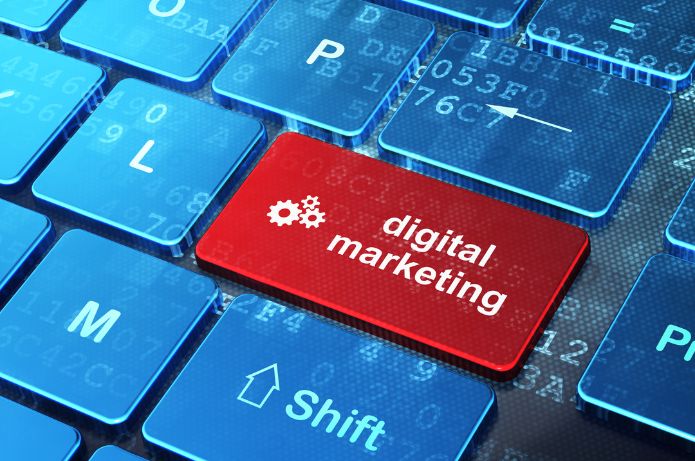Introduction
Marketing automation is a concept that has gained increasing relevance in the contemporary business scenario.In a world where efficiency and personalization are crucial to the success of marketing strategies, automation emerges as a powerful tool to optimize processes, improve customer engagement and increase the return on investment (ROI) of marketing campaigns.
Definition
Marketing automation refers to the use of software and technologies to automate repetitive marketing tasks, marketing process flow, and measure campaign performance.This approach allows companies to deliver personalized and relevant messages to their customers and prospects across multiple channels in an automated manner, based on prior behaviors, preferences, and interactions.
Main Components of Marketing Automation
1. Automated Email Marketing
If emails are triggered based on specific user actions
^cameras of personalized lead nutrition
& Automated transactional emails (order confirmations, reminders, etc.)
2. Lead Scoring and Qualification
Automatic assignment of scores to leads based on behaviors and characteristics
Automatic lead qualification for prioritization of sales efforts
3. Audience Segmentation
Automatic division of the contact base into groups based on specific criteria
Personalization of content and offers for different segments
4. CRM Integration
Automatic synchronization of data between marketing platforms and CRM systems
Unified customer vision for marketing and sales
5. Landing Pages and Forms
Creating and optimizing landing pages for lead capture
''Intelligent forms that adapt based on visitor history
6. Social Media Marketing
^Automatic posting on social networks
io Monitoring and analysis of engagement on social networks
7. Analysis and Reports
Automatic reporting of campaign performance
^real-time dashboards for key marketing metrics
Benefits of Marketing Automation
1. Operational Efficiency
Reducing manual and repetitive tasks
Release team time for strategic activities
2. Customization in Scale
Between relevant content for each client or prospect
Improve customer experience through more personalized interactions
3. Increase ROI
Optimizing campaigns based on data and performance
^better allocation of marketing resources
4. Alignment between Marketing and Sales
^better qualification and prioritization of leads for the sales team
''Unified view of the sales funnel
5. Data-Based Insights
^collapse and automatic analysis of customer behavior data
''Taking more informed and strategic decisions
6. Consistency in Communication
Maintaining a consistent message across all marketing channels
Ensuring that no lead or customer is overlooked
Challenges and Considerations
1. Systems Integration
^need to integrate multiple tools and platforms
''Potential compatibility and data synchronization problems
2. Learning Curve
^training necessary for teams to effectively utilize automation tools
Time for adjustment and optimization of automated processes
3. Data Quality
^Importance of keeping data clean and up-to-date for automation effectiveness
Necessity of regular data cleansing and enrichment processes
4. Balance between Automation and Human Touch
''Risk of appearing impersonal or robotic if not implemented correctly
^Importance of maintaining elements of human interaction at critical points
5. Compliance with Regulations
. Need to adhere to data protection laws such as GDPR, CCPA, LGPD
Management of communication preferences and opt-outs
Best Practices for Implementation
1. Clear Definition of Objectives
. Establish specific and measurable goals for automation initiatives
Align automation goals with overall business strategies
2. Customer Journey Mapping
Understand the different stages of the customer journey
Identify key touch points for automation
3. Effective Segmentation
Create audience segments based on demographic, behavioral, and psychographic data
Personate content and messages for each segment
4. Continuous Testing and Optimization
Implement A/B testing to refine automated campaigns
monitor KPIs regularly and adjust strategies as needed
5. Focus on Content Quality
Develop relevant and valuable content for each stage of the funnel
''Assure that automated content maintains a personal and authentic tone
6. Team Training and Training
Invest in training to maximize the use of automation tools
''From a culture of continuous learning and adaptation
Future Trends in Marketing Automation
1. Artificial Intelligence and Machine Learning
Implementing AI algorithms to predict customer behaviors
Using machine learning for continuous campaign optimization
''Chatbots and more sophisticated virtual assistants for customer service
2. Hyperpersonalization
Real-time data utilization for extremely granular customization
''dynamic content that adapts instantly to the user's context
2 Recommendations for AI-based products/services
3. Omnichannel Marketing Automation
Seamless integration between online and offline channels
''Consistent and personalized experiences at all points of contact
''Advanced tracking and attribution for a holistic view of the customer journey
4. Content Automation
Automatic content generation using AI
Curating and automated distribution of relevant content
^^^^^^^^^^ Real-time content optimization based on performance
5. Voice Marketing Automation
^integrating with voice assistants like Alexa and Google Assistant
^^^^Voice-activated marketing campaigns
''Analyzing vocal sentiment for deeper insights
6. Predictive Automation
Anticipating customer needs before they even express them
Proactive interventions based on predictive analytics
^^^^^^Optimization of timing for delivery of marketing messages
7. Marketing Automation with Augmented and Virtual Reality
''Virtual automated product experiences
^customized immersive marketing campaigns
2 Training and onboarding of clients using AR/VR
Conclusion
Marketing automation continues to evolve rapidly, transforming the way businesses interact with their customers and prospects.As technology advances, the possibilities for personalization, efficiency, and data analytics expand, offering unprecedented opportunities for organizations that know how to harness the full potential of these tools.
However, it is crucial to remember that marketing automation is not a magic solution. Its success depends on a well-planned strategy, quality content, accurate data and, above all, a deep understanding of customer needs and preferences. Companies that manage to balance the power of automation with the human touch necessary to build authentic relationships will be the ones that will benefit most from this revolution in marketing.
As we move into an increasingly digital and connected future, marketing automation will become not only a competitive advantage, but a necessity for companies that want to remain relevant and effective in their customer engagement strategies.The challenge and opportunity lies in using these tools in an ethical, creative and customer-centric way, always with the goal of providing real value and meaningful experiences.











